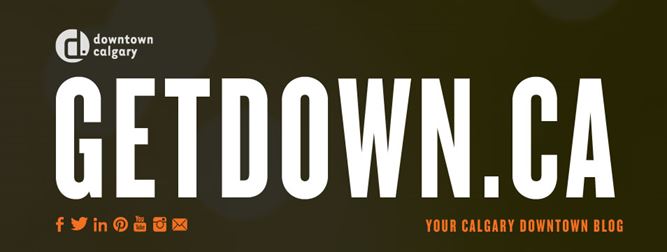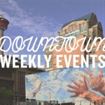This summer, Downtown Calgary has launched a new program exploring the history of our downtown core. Downtown Through the Decades focuses on bringing history to life through live music on the Stephen Avenue Stage, each Saturday from 1 p.m. - 4 p.m. Before you explore the sounds of the 50s this week with Bossa Kings, read up on all the changes the 1940s brought to Calgary! The 1940s were transformative for Calgary. Despite being an ocean away from the theatre of battle, the city was an active place during the Second World War, and in the post-war, latter part of the decade, the population exploded and the city became a modern metropolis.
Glenbow ArchivesRobin Hood Flour, with it’s now iconic yellow bag, had a mill in Calgary in the 1940s. Located at 9th Ave and 4th St SW, the mill had the capacity to produce two thousand barrels of flour per day and could store one million bushels of grain in its elevator. In wartime, it was working at full capacity, doing its best to ensure that the demand for flour was met amid food rationing. The company, between 1942 and 1944, had a Victory Loan campaign to assist in financing the war effort, offering an employee payroll deduction program for war savings bonds. The company also produced a popular radio show called “On Parade” to offer a distraction from war news. The mill closed in 1969, was donated to the City of Calgary in 1971, and subsequently demolished in 1973.
Music became an integral part of the Calgary Stampede in the 1940s. Harold Anderson and his Calgary Ranch Boys began playing downtown in 1948 as part of the entertainment on Stephen Avenue. He played every year until his passing in 2004, having been an integral part of the downtown scene for more than fifty years.
The Calgary Stampede was a welcome distraction from the reality of having family members fighting overseas. In 1943, a kiosk known as The Stamp Bar was opened downtown, selling War Savings Stamps and Victory Bonds. By 1944, the downtown kiosk had a partner location on the Stampede grounds. The Stampede Parade continued downtown throughout the war years, featuring displays of military artillery replicas, and honouring members of the military as Parade Marshals. In 1940, soldiers who were training at Currie Barracks led the parade, followed by members of the Royal Canadian Navy Volunteer Reserve in 1943, Women of the Canadian Military in 1944, and members of the Canadian Armed Forces in 1945.
Photo from the Calgary HighlandersA very different kind of parade happened downtown on November 24th, 1945. Arriving home to the CPR Station, then beside the Palliser Hotel, the Calgary Highlanders, along with two other units, were greeted with banners, streamers, and a huge crowd of well-wishers. The Highlanders left Calgary in 1940, choosing the Church of the Redeemer as the place to lay up their colours.
The original Church of the Redeemer, located in the 600 block of 1st St SE, was built in 1884. Originally just a wood frame building, the present sandstone building wasn’t completed until 1905. Despite being the first Anglican Church in Calgary, and open for worship in 1884, the Church was not designated as an official Cathedral until decades later. The Diocese of Calgary was waiting to see if a larger, more European style cathedral would be built in the city. The Bishops of Calgary gave up waiting, and proclaimed the Church of the Redeemer an official Cathedral in 1949.
Despite the 40s being a time of modernization for Calgary, the Union Milk Company delivered milk by way of horse and buggy well into the latter part of the decade, illustrating the transition between prairie town and thriving metropolis.
Related Posts
| Tweet |
|




